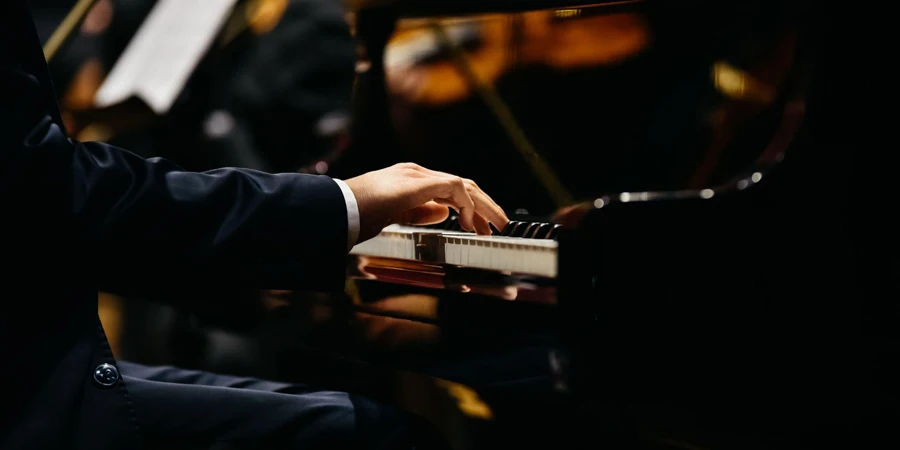Table of Contents
● Introduction
● Piano Market Dynamics
● Key Technology and Design Innovations
● Top-Selling Models Driving Market Trends
● Conclusion
Introduction
In 2024, the piano industry stands at a remarkable crossroads where the allure of tradition harmoniously intersects with the thrill of innovation. This year marks a defining moment in the evolution of piano trends, as cutting-edge technological advancements redefine the musical landscape, catering to a diverse range of artists and enthusiasts. The market itself has transformed, driven by a surge in demand for pianos that blend classic acoustic charm with digital versatility, a trend reflected in the growing market share and innovative models emerging in the industry. From state-of-the-art digital sound quality to ergonomic designs enhancing playability, these pianos are not just instruments but gateways to new realms of musical expression.
Piano Market Dynamics
The global piano market, which includes both acoustic and digital pianos, is projected to grow at a Compound Annual Growth Rate (CAGR) of 1.9% from 2022 to 2031, reaching a market size of approximately USD 2.844 billion by 2031. The market is driven by several factors, including the inclusion of music in academic curricula, the rising interest of youngsters towards becoming percussionists, and the growing interest among individuals, particularly youngsters and seniors.
The digital piano market is expected to grow significantly. In 2022, the global digital piano market size was estimated to be worth USD 1109.9 million, and it is expected to expand at a CAGR of 3.31%. The digital piano market is expected to witness steady growth due to rising applications, and the consumption of digital pianos is estimated to show a trend of steady growth.The acoustic piano market is also expected to grow, with the market size projected to reach a multimillion-dollar value by 2029. The growth in the acoustic piano market is primarily driven by the global recovery trend and the growing demand for acoustic pianos.
Regionally, the Asia Pacific is expected to hold a significant part of the piano market share due to the implementation of integrated curricular activities. The market growth in this region will be faster than the growth of the market in other regions. The market in North America is also expected to grow considerably during the forecast period.
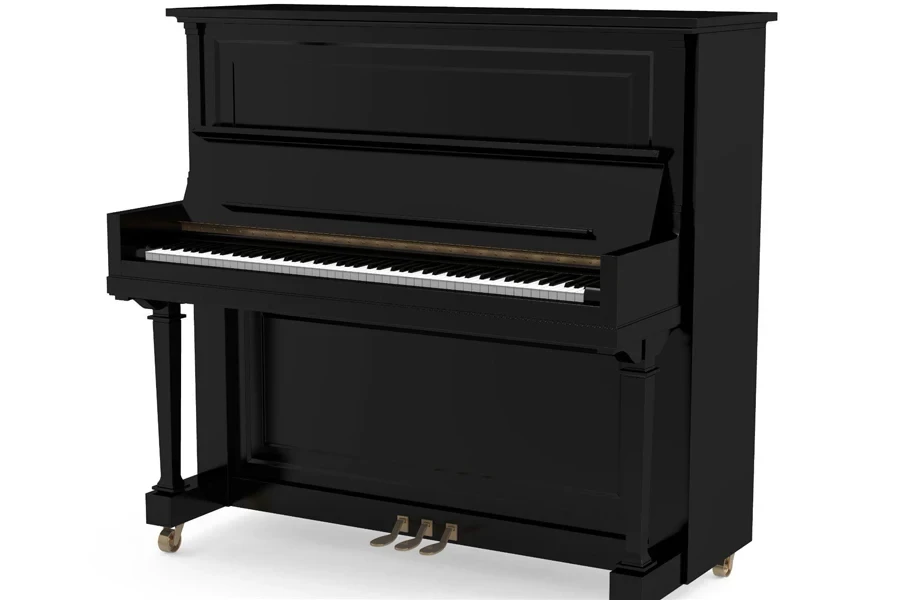
Key Technology and Design Innovations
1. Digital Piano with 88 Weighted Keys:
Digital pianos equipped with 88 weighted keys have significantly advanced in recent years, closely replicating the tactile feel and response of an acoustic piano. These keys offer a nuanced playing experience, making them suitable for players at all skill levels. The underlying technology includes small hammers connected to each key, simulating the mechanical actions and varied resistance typical of traditional pianos. This mechanical action simulation is crucial for an authentic piano experience.
The keys are weighted in a graded manner, meaning they are heavier in the lower register and lighter in the higher register, mirroring the hammer sizes in an acoustic piano. Such graded key weighting is essential for realistic piano feel and helps players develop proper playing technique. Furthermore, recent advancements in key action have significantly reduced the noise level and improved responsiveness, enhancing the overall playability of these instruments.
Touch sensitivity in these pianos allows the volume to vary based on the force of the keystroke, enabling dynamic playing from soft (pianissimo) to loud (fortissimo). This touch sensitivity for dynamic playing is crucial for expressive performance, allowing pianists to convey a wide range of emotions through their music.
Moreover, the integration of these weighted keys with advanced sound engines and realistic piano samples further elevates the playing experience. This sophisticated integration makes digital pianos not only ideal for expressive and technically accurate performances but also essential for those seeking an instrument that feels and plays like a traditional acoustic piano. Such pianos cater to a wide range of musical styles, making them versatile across various genres and suitable for different techniques and expressions.
For those who frequently switch between digital and acoustic pianos, the similarity in key weighting ensures a seamless transition, maintaining consistency in playing style. Additionally, weighted keys prove advantageous in recording scenarios, as the nuanced control over dynamics enhances the quality of recorded performances, facilitating professional-sounding tracks. In summary, these pianos enable performers to convey emotions with precision, fostering a more intimate connection with the music and enhancing the artistic expression.
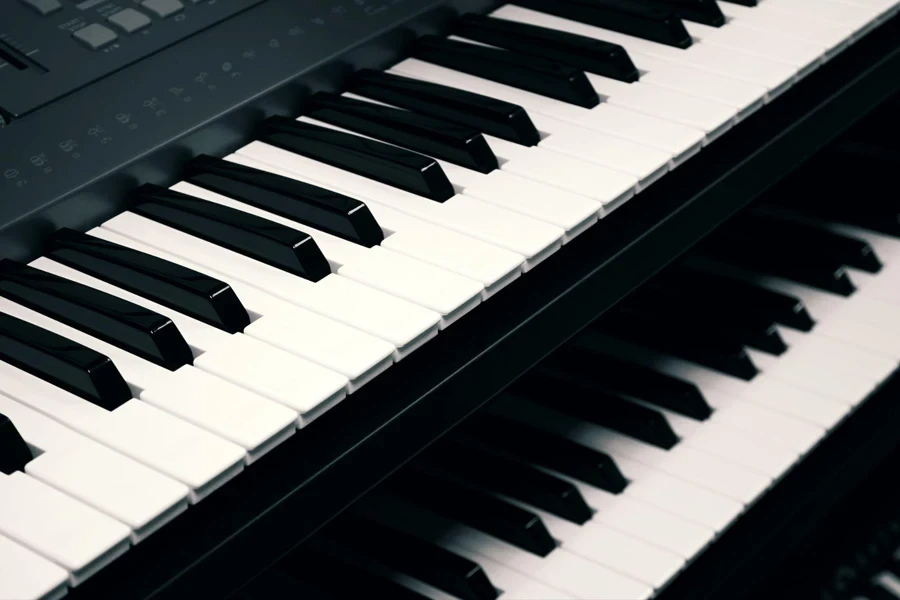
2. Features of Innovative Models:
AiR Engine:
- The AiR (Acoustic & Intelligent Resonator) engine is a sound technology used in digital pianos.
- It provides highly-accurate grand piano sounds with seamless dynamics for expressive and powerful performances.
- The engine offers advanced sound quality and is designed to replicate the nuanced tonal variations and resonances of an acoustic piano.
Tri-Sensor Scaled Hammer Action II Keyboard:
- This keyboard action features in many modern digital pianos, including some models from Casio.
- It offers a realistic piano touch and response, mimicking the feel of an acoustic piano.
- The tri-sensor component ensures accurate detection of keystrokes, capturing the dynamics of a player’s performance.
- It enhances playing realism, especially for experienced pianists, by providing an authentic weighted feel.
Multi-Dimensional Morphing AiR Sound Source:
- This sound source technology is used in Casio digital pianos.
- It produces the natural, full-bodied sound of a grand piano with incredible detail and depth.
- The technology includes features like Damper Resonance, which simulates the resonant sound of all strings when the damper pedal is used.
- It also incorporates Damper Noise and Key Action Noise, adding to the realism of the sound produced.
- The technology allows for smooth volume and timbre changes according to key velocity and duration, enabling nuanced expression.

Top-Selling Models Driving Market Trends
These models with stand-out features profoundly impact the whole market.
Casio Privia PX-160BK:
- Utilizes Casio’s AiR Sound Source for grand piano sounds, meticulously recorded at 4 dynamic levels for expressive performance.
- Features the Tri-Sensor Scaled Hammer Action II keyboard with new simulated Ebony and Ivory textured keys, capturing the dynamics of a performance with speed and accuracy.
- Offers newly developed string ensemble sounds, rich and versatile for solo or layered playing.
- Provides split and layer capability, allowing bass play with the left hand and two layered tones with the right.
- Equipped with two headphone outputs for private listening and 1/4″ line outputs for amplification, making it suitable for live performances.
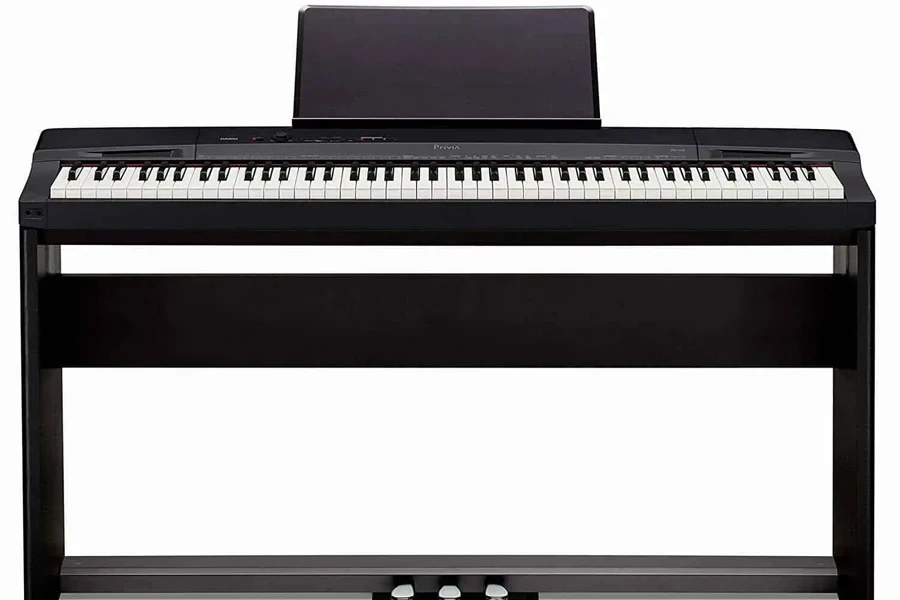
Yamaha P45 and P35B:
- Both models feature the GHS (Graded Hammer Standard) weighted action, offering a heavier touch in the lower end and a lighter touch in the high end.
- Equipped with AWM Stereo Sampling tone generation for high-quality, detailed sounds.
- The P45 model provides a richer, more varied sound library, including 10 voices like piano, electric piano, and strings.
- Designed for beginners and intermediate players, offering ease of use and quality sound reproduction.
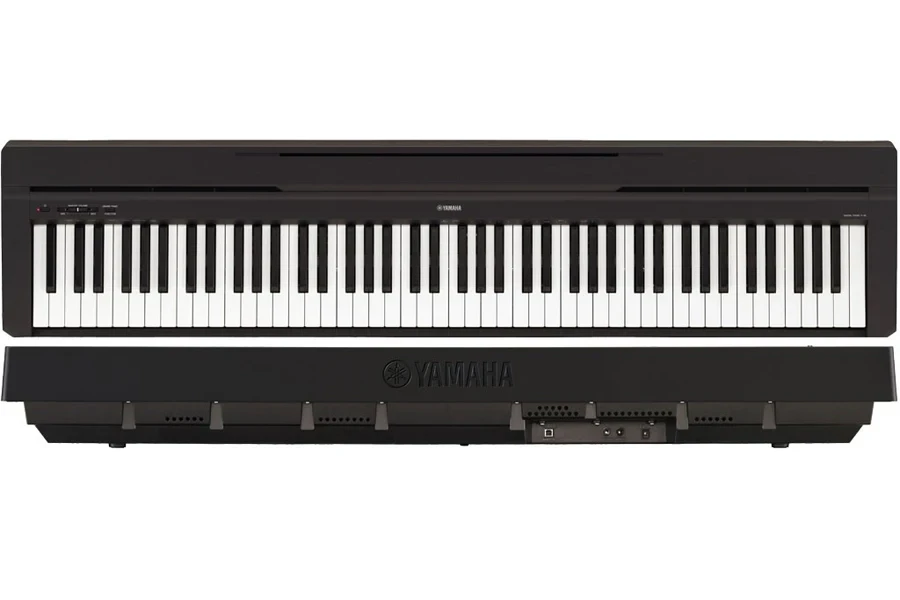
Kawai ES110:
- Features the Responsive Hammer Compact keyboard action, providing a highly authentic key touch experience.
- Equipped with Harmonic Imaging sound technology for a range of rich piano sounds, suitable for both practice and performance.
- Lightweight and portable, weighing just 12.0 kg, making it ideal for gigging musicians.
- Offers Bluetooth connectivity for easy integration with other devices.
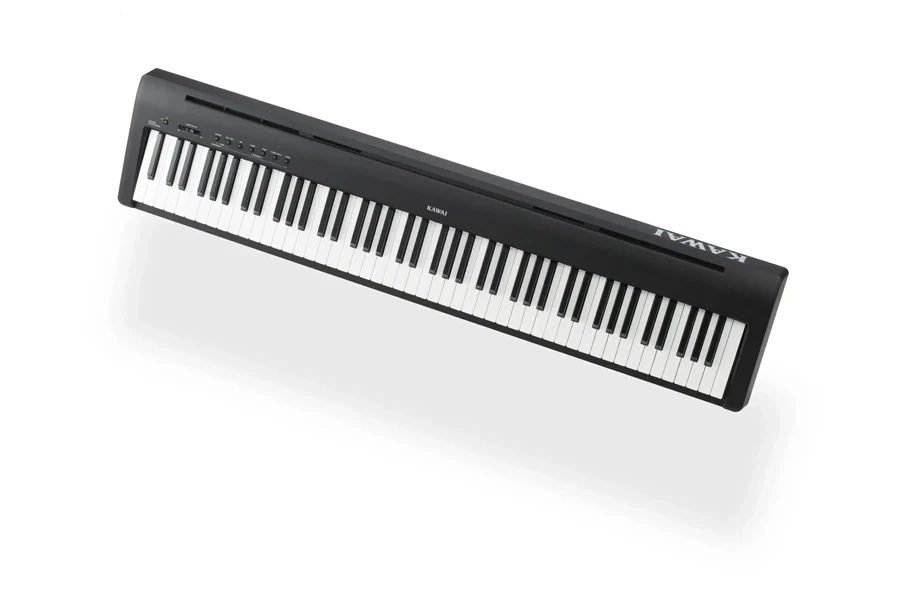
Roland FP-30:
- Utilizes Roland’s PHA-4 Standard Keyboard with high-resolution sensing and escapement for authentic piano touch.
- Features Roland’s SuperNATURAL Piano sound engine for rich, dynamic piano tones.
- Offers a variety of built-in sounds, including 35 voices and the ability to layer and split tones.
- Equipped with powerful onboard speakers, providing clear and robust sound.
- Supports Bluetooth connectivity for use with music apps and wireless audio streaming.

Nord Stage 3:
- Features the Nord Lead A1 Synth Engine with sample playback, offering extensive sound design capabilities.
- Equipped with the acclaimed Nord C2D organ, delivering realistic organ sounds.
- Includes a greatly enhanced Piano Section with doubled memory for the Nord Piano Library.
- Offers extensive hands-on effects for real-time sound shaping.
- Designed for live performance with seamless transitions between sounds and extensive layering and split capabilities.
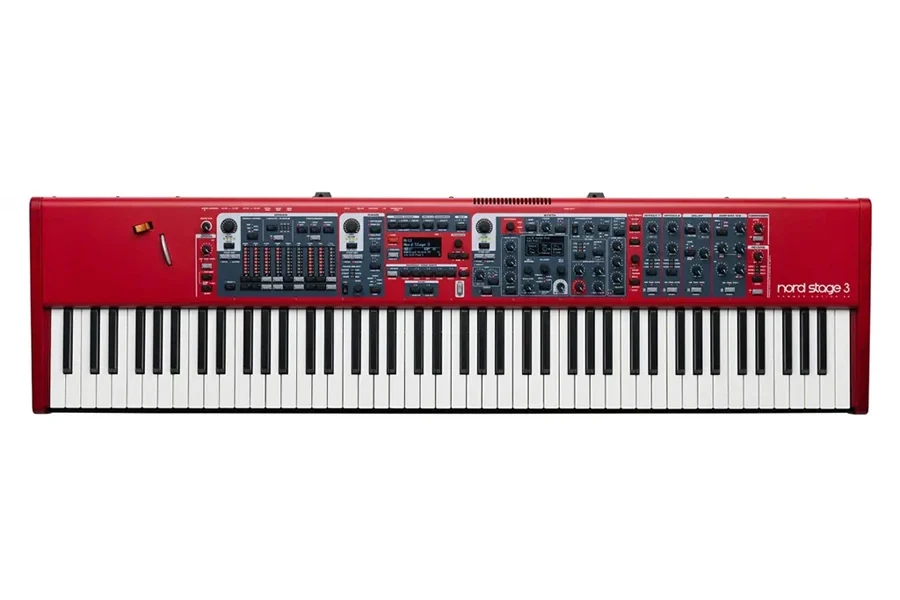
Conclusion
The piano industry in 2024 stands as a vibrant testament to the harmonious blend of tradition and innovation. The key technological and design innovations, particularly in digital sound quality, hybrid models, and ergonomic designs, have redefined the boundaries of musical expression and accessibility. The leading models dominating the market trends reflect a deep understanding of the needs of modern musicians, combining exquisite sound quality with advanced features to cater to both performance and practice needs.
The evolution of the piano industry in 2024 is a clear indicator of its resilient and dynamic nature. As we have explored, the industry not only upholds the traditional values and craftsmanship of piano making but also embraces the possibilities brought forth by cutting-edge technology. This ensures that pianos remain integral and versatile instruments in the world of music, capable of inspiring new generations of musicians. The impact of these technological innovations and market shifts is profound, setting the stage for an exciting future in piano playing and music creation, where the possibilities seem as limitless as the creativity of those who play them.
